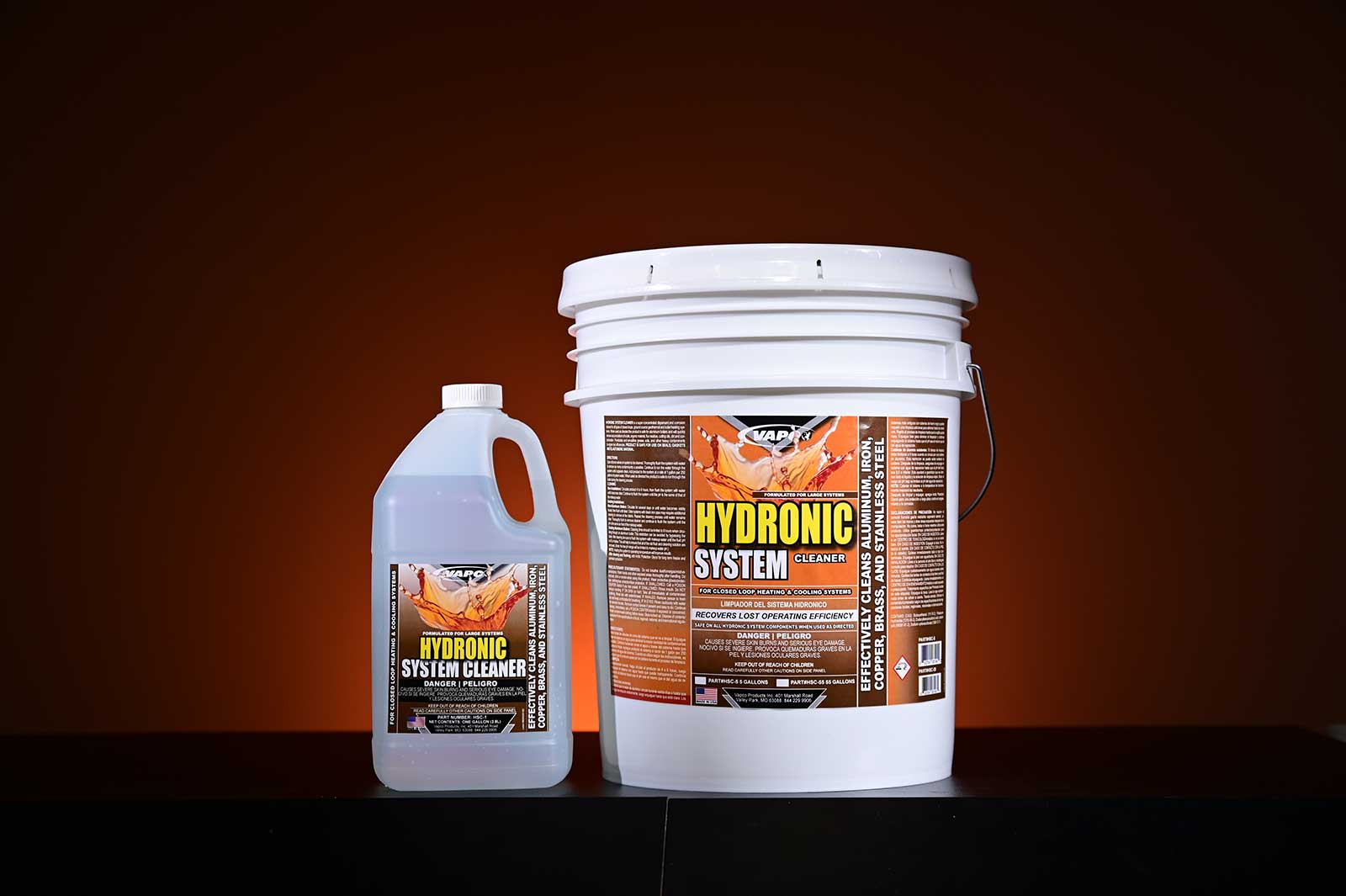Cleaning a Glycol Hydronic System: Your Guide to Peak Efficiency

A crucial part of maintaining your heating and cooling system is cleaning a glycol hydronic system. In fact, your hydronic system is a hardworking machine, and the glycol fluid inside is its lifeblood. However, while we pay a lot of attention to the glycol itself, there's a hidden enemy lurking inside your pipes that can drain your wallet and damage your equipment: dirt. Therefore, this guide will explain when and why cleaning a glycol hydronic system is one of the smartest maintenance moves you can make.
Why is Cleaning a Glycol Hydronic System So Important?
Imagine trying to run a marathon with sludge in your arteries. That's precisely what your hydronic system is doing when it's filled with rust, scale, and grime. As a result, this internal gunk causes three major problems:
- First, Sky-High Energy Bills: Rust and mineral scale act like a layer of insulation inside your pipes and heat exchangers. This forces your boiler or chiller to run longer and harder to heat or cool your space, wasting energy and sending your utility bills through the roof.
- In addition, Wasted Glycol and Costly Corrosion: High-quality glycol contains special ingredients called "inhibitors" that act like bodyguards for the metal in your system. When you put fresh glycol into a dirty loop, these inhibitors get used up trying to clean the existing rust instead of protecting the pipes. Consequently, your expensive new fluid fails quickly, and corrosion begins to eat away at your equipment.
- Finally, Expensive Equipment Damage: Loose debris acts like liquid sandpaper, grinding away at delicate pump seals and valves. Moreover, thick sludge can clog narrow passages, leading to system failure and expensive repairs.
The 3 Critical Moments for Cleaning a Glycol Hydronic System
So, how do you know when it’s time to flush things out? A powerful cleaner like Vapco's Hydronic System Cleaner (HSC) is essential in these three critical moments.
Cleaning a Glycol Hydronic System Before a New Installation
Don't fall for the myth that a new system is a clean system. It's not. In fact, best practices demand that every new system is chemically cleaned before it's ever filled with glycol. New pipes are full of nasty leftovers from the factory and the installation process, including:
- Factory Oils and Grease
- Metal Shavings
- Solder and Flux
Leaving this junk in your system will wreak havoc from day one, instantly depleting your new glycol's inhibitors. Therefore, a pre-commissioning flush ensures your system starts its life with a clean slate, ready for maximum performance and a long, healthy lifespan.
Cleaning a Glycol Hydronic System When You Refill
If the old glycol you're draining looks dark, rusty, or sludgy, it's a clear sign that the inside of your pipes looks the same way. Furthermore, simply draining the old fluid and adding new is like changing your car's oil but leaving the dirty, clogged filter in place. Ultimately, before adding new fluid, flushing the system with a cleaner removes years of built-up gunk. This, in turn, ensures your new glycol investment is protected and can get straight to work protecting clean metal.
How Cleaning a Glycol Hydronic System Fixes Inefficiency
Is your system showing signs of trouble? Are some rooms cold? Are you hearing strange noises from your pumps? Are filters clogging up constantly? Indeed, these are all symptoms of a system that's choking on internal debris. Therefore, a chemical flush is a powerful troubleshooting step that can clear out blockages, restore proper flow, and bring an underperforming system back to life, potentially saving you from a costly equipment replacement.
Choosing the Right Cleaner: Tough on Gunk, Gentle on Your System
You can't just use any chemical for cleaning a glycol hydronic system. In fact, harsh acids or homemade concoctions can damage seals, gaskets, and even the metals in your system. Thus, you need a product designed for the job.
Specifically, a professional-grade product like Vapco's Hydronic System Cleaner is ideal because it's engineered for the job:
- For example, it is specifically formulated to dissolve and lift away the exact type of gunk found in hydronic systems, like scale, flux, and rust.
- Additionally, this product is safe for your equipment, cleaning thoroughly without harming the various metals in your system, including steel, copper, and aluminum.
- Finally, its ease of use is a major benefit; you can simply circulate it through the system to do the hard work for you, making the process simple and effective.
Learn More About Glycol Hydronic Systems
-
ASHRAE (American Society of Heating, Refrigerating and Air-Conditioning Engineers)
A global society that advances human well-being through sustainable technology for the built environment. ASHRAE Design Guides -
Raypak
A leading manufacturer of boilers and water heaters, offering a technical article on the use of glycol. Anti-Freeze in Hydronic Systems -
Chardon Labs
A water treatment company providing detailed information on corrosion and scale in closed-loop systems. Corrosion & Scale in Closed Loops -
Caleffi
A manufacturer of high-quality components for heating, plumbing, and air conditioning systems with an educational video on maintenance. Cleaning, Purging and Filling: Secrets to Success
Frequently Asked Questions
Q: Can't I just flush my system with water?
A: Water alone isn't enough. It can't dissolve stubborn oils, grease, or baked-on mineral scale. A chemical cleaner is needed to break down and lift these contaminants so they can be completely flushed out.
Q: What are the visible signs of a dirty system?
A: The biggest clue is the fluid itself. If it’s dark brown, black, or has floating particles, your system is dirty. Other signs include frequently clogged filters, poor heating/cooling performance, and noisy pumps.
Q: How long does a system cleaning take?
A: It depends on the size and condition of the system, but you should typically plan to circulate the cleaner for several hours to a full day to ensure it has time to work effectively before the final flush and refill.
